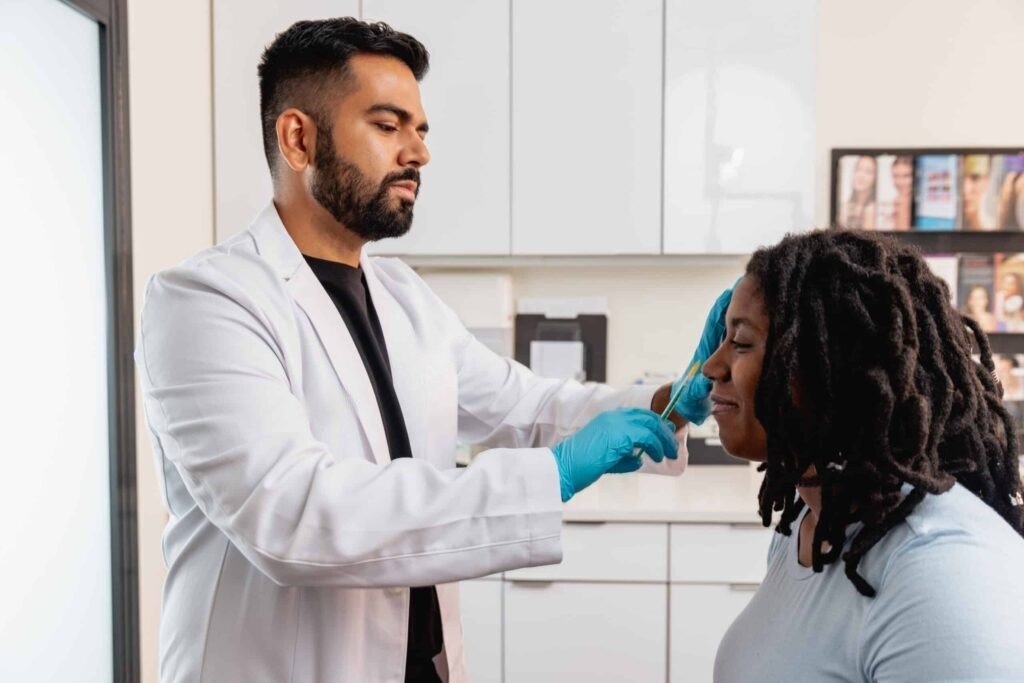
HOMEPAGE / MEDICAL DERMATOLOGY / BENIGN GROWTHS
BENIGN GROWTHS
SCREENING AND TREATMENT

Angiomas, also known as cherry hemangiomas, are harmless benign growths made of blood vessels. They are small, bright red, round growths that tend to appear in adults and may increase in number with age. Cosmetic removal can be accomplished with the pulsed dye laser.
Cysts in the skin can occur on the body (epidermoid cysts) or in the scalp (pilar cysts) when a region of skin invaginates and collects a cheesy material called keratin. Epidermoid cysts may appear yellow and have a central pore through which the material can be expressed. Pilar cysts are slightly deeper, so usually appear as movable bumps in the scalp. Cysts can become infected and require antibiotics. While treatment is not required, they can be easily removed with a small, in-office surgical procedure. We also offer skin cancer screening and patch testing to ensure the correct diagnosis.


SCHEDULE YOUR CONSULTATION ONLINE
To learn more about diagnosing and treating benign growths, contact Vital Dermatology NJ in Parsippany NJ, to schedule a consultation. You can also schedule an appointment online here.
NEXT, READ ABOUT

ROSACEA
Rosacea is a common skin disease that causes redness and red pimple-like breakouts on the face. It begins with a tendency toward “flushing and blushing” and may then progress to a persistent redness of the central face.

PSORIASIS
Psoriasis is a chronic skin disorder characterized by raised lesions with silvery scale that most often occur on the scalp, elbows, knees and lower back. It can range from a very mild, hardly noticeable rash to a severe eruption that covers large areas of the body.

ACNE
Acne is a skin condition with blackheads, whiteheads, red pimples and cysts. It usually affects the face, but can also involve the upper body. Acne affects people of all ages and in some, can leave dark marks or pitted scars.
